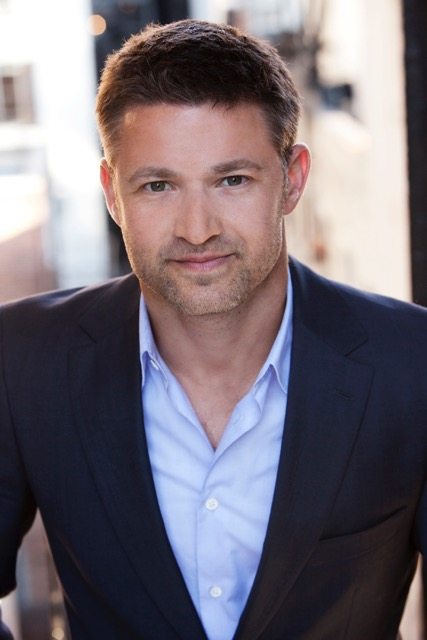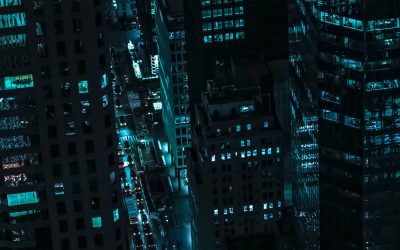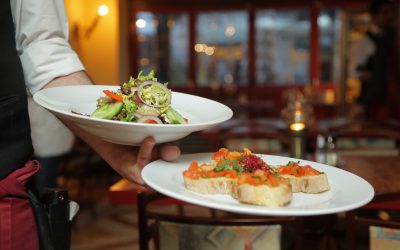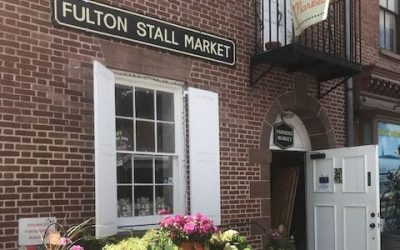I first became familiar with Workshop/APD‘s work when I wrote a piece for our fall issue on 70 Charlton St. After talking to one of the principals Andrew Kotchen about the design and the work his team did on the interior for the luxury Hudson Square property, I was immediately impressed. In addition to 70 Charlton, Workshop/APD has worked on several other projects including the Printing House, and most recently, 88 & 90 Lexington Ave., which is their largest project to-date.
I was able to speak with Matt Berman, a principal at Workshop/APD about the ongoing project at 88 & 90 Lex, as well talking about his firm, great design and the challenges that come with working in the architect and design industry.
I became familiar with your work after I interviewed Andrew [Kotchen, principal at Workshop/APD] for a piece on 70 Charlton, and am also familiar with your work with the Printing House. With these and 88 & 90 Lex, the buildings all have some sort of historical context, would you say your firm works a lot with buildings that have some sort of history behind them?
Matt Berman: No doubt. We’re modern architects, but we live in New York, and we’re dealing with an aging housing stock, and an aging building stock, so we’re always working in older conditions and updating. That is what working in New York is all about. We’ve done it on the single-family residential scale, multi-family residential scale. We worked on a project up at the Navy Yard, which was working with one of the sort of tiny, but really historic buildings there. It was the old Lieutenant Commander’s house, and we did a modern addition behind it. So yeah, I think that dynamic between old and new is something that really interests us, and how you take something that is aging and had seen a former life and kind of breathe new life into it.
Now, with the 88 & 90 Lex building, 88 is 1920s, sort of pre-war, art-deco building, and 90 Lex is 1950s, more modern. How were you able to work to sort of combine those elements to make it a cohesive look on the outside and on the inside?
(laughs) That’s a good question. Not easy, 88 is a beautiful pre-war building. Now, both of those buildings were designed as office buildings, not residential buildings, so from aside their sort of exterior appearance, the inside also had a lot of challenges because office floor plates are deeper and larger than typical residential floor plates. It was a challenge to just create the unit mix and get the units to flow the way you would want them to for a residence. 88 is a beautiful pre-war building, like you said, because it was an office space it had huge windows. When you’re in the units in 88, you look out those, I think they’re 5-by-8 foot windows; they’re amazing. And everyone thought, the whole ownership team and the marketing team thought that 88 was going to be the gem, and 90 was going to the ugly stepchild. If you saw what 90 looked like before we got our hands on it, it was pretty bad. It was a 1960s, ribbon window office building, and I think they were both Blue Cross Blue Shield buildings. The ownership team said to us, “Listen, we know what we’re getting ourselves into, let’s try to clean up 90, let’s try to make it pretty, let’s try to work with the existing geometries and the existing window openings, and let’s see what you could do to just make it better.”
So we tried (laughs), we’re pretty talented, and we must have looked at — and I’m not kidding — 30 to 40 different schemes of material compositions and window layouts, but trying to maintain the existing mass, and the existing terraces and windows, stuff like that, and they were all horrible. We couldn’t defend any of them, we hated them, and we said, “You know what, this building has great ceiling heights, great views, we’re going to come back with a proposal that actually takes the existing facade off, and we’re going to apply a new facade, and we’re going to show you how different the buildings look.” And we did that, and we came back with a simple diagram that showed the existing condition which was literally standing inside the building looking through a 2-foot high window, and then proposed condition which was standing in the building looking through a 9-foot high floor to ceiling glass window. You know, immediately they were sold on it, and we designed a new facade. The new facade from 90 was…it’s intended to sort of be a sister facade to 88; they’re both limestone, it has these very clean rectangular punctures, which are similar to the proportions of the windows in 88. We wanted it to be a newer version of kind of the sister language, because they’re kind of sister buildings. And that sold it, and now 90 is getting a lot of attention; 88 is still a beautiful building, but 90 has turned into this kind of gem of a building. To get back to your original question, between old and new, they kind of inspired each other, and I think that dynamic really worked for this project.
When you are approached with projects like this, take me through your process. How does the design process work?
Every project is different. I think that if you’re dealing with an existing building, you spend a lot of time trying to understand that building. We spend a lot of time trying to understand who the buyer is, trying to understand that buyer profile, trying to understand the neighborhood that it is in. You’re really trying to digest a lot of the information, and then we’re coming back to it, and looking at all of that through our lens. We then start pulling images. We pull tons and tons of inspiration images that are about basically everything we had just learned about the buyer, the neighborhood and the building. We pull together images that we think speak to those relationships, that person. We start with a ton of inspiration images and then we sort of whittle it down, and we start looking at material palettes and we don’t necessarily look at material palettes for a specific thing, we’re not looking at flooring or anything like that, we’re just looking at a vibe. What’s the mood that we’re trying to create? What’s the thing that’s going to make memorable? What distinguishes it from all of the other apartments that are coming on line? So, you kind of go through that, and once you do that and lock in on what you want to do and everybody approves it, and ownership and marketing agree that its the right direction, you start developing it, and take it a step further. In this case [with 88 & 90 Lex], our first step was to really focus on the model units, and on the units themselves because that’s obviously what they’re selling. We understood that, and we looked at the 90 facade which was a key component, we really had to understand that, and then after that we started developing the lobby and the corridors, things like that, and then the amenity spaces. But it’s always done through the lens of that initial pass of images and vibe that sets the stage for the project.
Now obviously good design is essential, but what sets someone apart from a good designer versus a great designer? What sort of distinguishes the two?
That’s a good question. I think it is fundamentally never being satisfied, I think it’s continuing to question yourself, test yourself. Innovate, I think there’s a lot of good design out there, like you said it’s good, there’s nothing wrong with it. But it doesn’t innovate, and it doesn’t challenge, and it doesn’t move the needle. And great design, I think, is something that moves the needle. It tells a story, and it sort of connects with people in a way that’s unique.
What do you think sets your firm apart from others out there?
It’s a bunch of things, I think. There’s not just one thing. I think part of it is desire to continue to keep learning and innovating. We’re not a signature firm; we don’t have one signature style. We are modern architects and modern designers, and we love materiality and things like that, but I don’t think you would look at 10 of our projects and say that they all look the same. I think you’ll see common threads and common materials, you’ll see a common sort of crispness and clarity, but it’s not a one-liner kind of thing. I think part of it is that continuing to understand ourselves, and learn about ourselves, and test our own ideas, and we put that on everyone in our office. Everyone in our office, we’re not a very top-den office, like I sit there and sketch, or Andrew sits there and sketches and we hand it off to someone to get executed. We’re much more of a studio environment, where we have incredibly talented people, and we want them to come to the table with great ideas. I think that what makes our office great is frankly the people. We have an exceptional group of people.
What would you say are some of the biggest challenges working in this field? More specifically with 88 & 90 Lex.
The challenges of 88 & 90 Lex are really that it is an old existing office building. So, you’re dealing with a lot of floor plates, like I said deep floor plates, bad facades…you’re dealing with a lot of things that have to get fixed in order to turn this into a Grade-A project. We’re putting a pool in the basement, that meant excavating down between the footings of the historic building; it was very complicated stuff. It’s a tangled web that you have unweave and understand, and make sense out of. That’s all really complicated. The Printing House had the same thing. Printing House had land mines all over the place, and you just have to figure out how to deal with them. I think in some ways, we’ve developed a kind of expertise in that, not because we love it, but because we’ve done it a lot (laughs), and now we just understand how to do it. But the buildings are challenging. I think the challenges of the profession are numerous.
Do you think there are any misconceptions people may have about the architect and design industry?
I think it depends on where you are. I think that in certain areas, in urban areas in New York especially, there’s a really healthy community of architects and designers, and I think that by and large, a lot of people respect architects and designers and look to them for advice and see the value that they bring to projects, and I think you see that in places like Chicago, Miami and L.A. and stuff like that. I think that as you get further out of some of these urban centers, or maybe smaller urban centers, the people don’t understand the value, or haven’t experienced the value, and there’s less of an understanding of what architects and designers can do for spaces. Unfortunately, I think a lot of the media on TV and all that make it seem like D.I.Y. and home owner driven is misleading, because I don’ think it is actually that easy. I think it’s misleading, and think that it is unfortunate.
I think one of the things that is a privilege when you’re in a place like New York is that you get to experience greatness, on a lot of levels. I just went to see “Hamilton” on Broadway and I was just blown away; it was a moment of sheer greatness. When you walk along the Highline, that’s a moment of sheer greatness. You get to experience these moments where you come into contact with people doing exceptional work, and it makes you tingle, it affects you. And that makes you appreciate it, or you walk into a new hotel, I was at the Packard Hotel on 53rd Street, it’s spectacular, you walk in and it takes your breathe away. So I think we’re fortunate, we get to experience that, which means that the people here want that, which means buyers here want that, you know what I mean? The bar is high. We have to deliver at that level; it motivates us to deliver at that level, and we have to deliver at that level.
What kind of advice would you give to someone who is just starting out in this industry?
I would say that anyone who is just starting out, if you really believe in yourself, and your confident in your skills. If you’re working in an office and you’re a junior on a project, or you’re the low man on the totem pole, don’t become a wallflower. Push yourself into projects. Walk into the principal’s office, sit down and talk to them. Find out about the direction of the firm. Spend time with the senior people, the senior designers. Try to understand what they want. Invest yourself in it and show that you’re committed and you’re going to put in the effort, don’t wait for it to be handed to you.
-by Jackie Hart

















